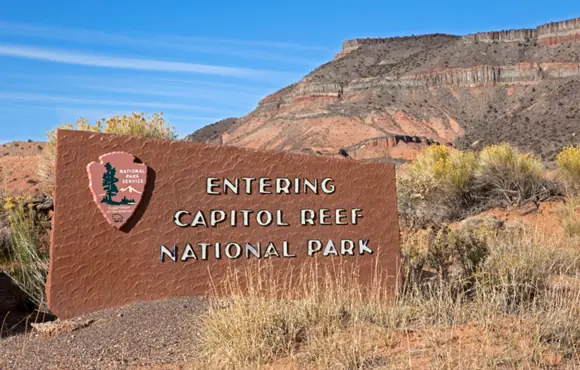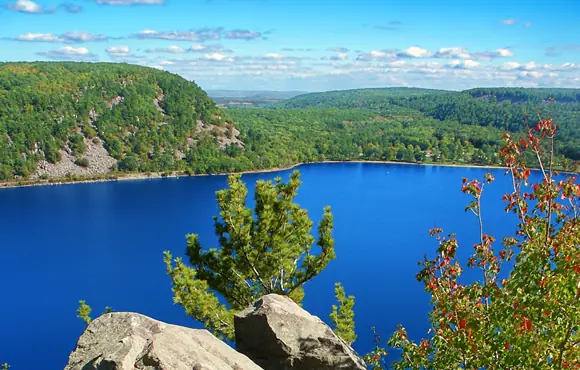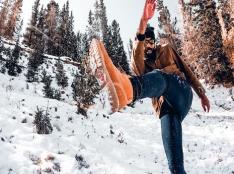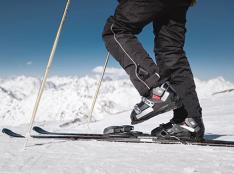It's not as well known as Arches or Zion, but Capitol Reef is arguably Utah's most diverse national park, with natural beauty, unique geological features, astronomy, human history and pre-historic fossils. If that's not enough, here are eight good reasons to make a trip to Capitol Reef National Park.
1. Inexpensive Fees
1 of 9
Capitol Reef is a bargain as far as family trips are concerned. Admission is just $5 per vehicle for seven days. Stay 9 miles outside the park, at Singletree Campground, and bike in to avoid fees altogether.
Reserve a
campsite2. Impressive Hikes
2 of 9
The interesting features of Capitol Reef are part of the Waterpocket Fold, a unique "wrinkle" in the earth. Hiking this area, and the rest of the park, is perhaps the best way to explore these unique features. Popular day hikes include Hickman Bridge, Capitol Gorge and more than a dozen others.
Hickman Bridge is an excellent short hike where you're treated to spectacular scenery, Fremont ruins, and the Hickman natural bridge. A smaller arch is visible along the trail as well.
Don't miss the Capitol Gorge hike, either, which winds past petroglyphs and the Pioneer Register where early settlers recorded their names in the rock. You'e also treated to views of the Golden Throne, a popular photo op in Capitol Reef, and a short side trail that leads to a set of natural water pockets.
Reserve a
campsite3. Unbelievable Stargazing
3 of 9
The remote, desert location of Capitol Reef National Park makes it one of the best places in the United States to gaze at the night sky. Thousands of stars can be seen on clear, moonless nights and ranger-led night hikes and stargazing programs are occasionally offered in the summer months.
Capitol Reef National Park is a co-sponsor of the annual Heritage Starfest in nearby Bicknell. This stargazing festival is held on the first moonless weekend in September. Visit www.heritagestarfest.com for more information about this event.
Reserve a
campsite4. Interesting History
4 of 9
Capitol Reef National Park is home the historic remains of Fruita, a town established by Mormon pioneers in the 1880's that was last inhabited in the early 1960's. Historic structures include the Gifford House, a good place to buy snacks and souvenirs during the summer season, and a one-room schoolhouse.
One particularly memorable structure is the Behunin Cabin. During the 1890's, Elijah Behunin and his wife lived in (and around) this small one-room cabin with 11 of their 13 children.
Reserve a
campsite5. Fresh Fruit Picking
5 of 9
Capitol Reef National Park has more than 3,000 fruit and nut trees. Visitors are welcome to pick their own fruit when it's in season. If you eat your harvested goods at the orchard, they're free, but if you take them home, you have to pay. The fruit-harvesting schedule is:
Cherries: June 11-July 7
Apricots: June 27-July 22
Peaches: August 4-September 6
Pears: August 7-September 8
Apples: September 4-October 17
Reserve a
campsite6. Pre-Historic Life
6 of 9
The geologic "wrinkle" that created Capitol Reef also contains some of the oldest pre-historic animal tracks, drag marks and skin imprints in North America. Some of these fossils are located a short walk from the main road and all date back to the Triassic era, which pre-dates the dinosaurs.
Large stromatolite fossils, estimated to be up to 3 billion years old, can be found in remote areas of the park. Visit the ranger desk to learn more about where you can find pre-historic evidence for yourself.
Reserve a
campsite7. Family Fun
7 of 9
The Ripple Rock Nature Center is overflowing with educational books, toys and activities just for kids. Children can learn about nature, ancient cultures, or play pioneer games, and many families enjoy scouring the grounds to check off everything on the center's scavenger hunt.
Children can also participate in Capitol Reef's Junior Ranger program year-round. Pick up a free Junior Ranger book from the ranger desk at the visitor's center and complete the activities. Once finished, return to the desk where your child will be sworn in as a Junior Ranger and receive a souvenir gold ranger badge.
Capitol Reef occasionally offers additional programs for children, such as the Junior Geologist program, through the summer. Check with a ranger to find out what programs are available during your stay.
Reserve a
campsite8. Plenty of Nearby Destinations
8 of 9
There are many other interesting destinations near Capitol Reef National Park. If you're planning to spend a few days in the area, consider a side trip to one or more of these attractions:
- Anasazi State Park Museum, 45 miles
- Goblin Valley State Park, 70 miles
- Grand Staircase-Escalante National Monument, 107 miles to visitor center in Cannonville, Utah. There are closer points of access to the north end of the monument along Highway 12 and Highway 24.



.jpg?height=174&mode=Thumbnail&width=234)



Discuss This Article